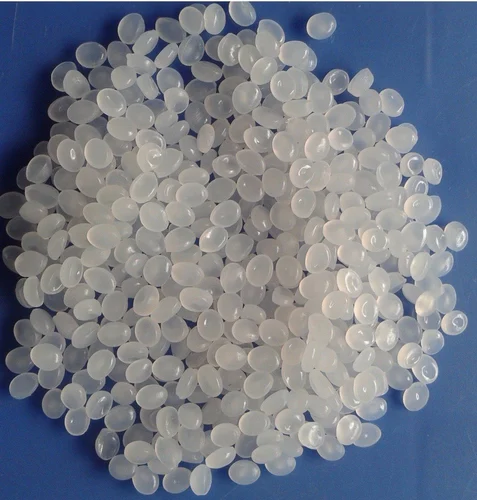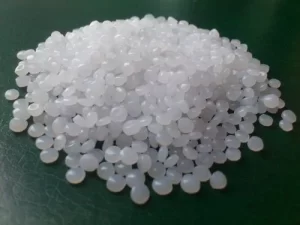hdpe granule for rotational molding
HDPE (High-Density Polyethylene) granules are commonly used in the rotational molding process to create large, hollow, and durable plastic items. Rotational molding, or “rotomolding,” involves placing HDPE granules in a mold that rotates slowly on two axes. The granules are heated, melt, and coat the mold’s inner surfaces to form a uniform layer. Here’s a deeper look into why HDPE granules are a preferred material for this process, the steps involved, and specific attributes that make HDPE ideal for rotational molding.

Why hdpe granule for rotational molding ?
HDPE is known for its excellent balance of toughness, flexibility, and chemical resistance, making it ideal for applications where durability and strength are required. Specifically:
- Durability: HDPE’s high strength-to-density ratio makes it resistant to physical damage, allowing it to withstand impacts without cracking or breaking.
- Weather Resistance: HDPE can withstand various environmental conditions, including sunlight (with UV stabilizers), cold temperatures, and moisture, which makes it well-suited for outdoor applications.
- Chemical Resistance: HDPE is resistant to most chemicals, making it a good choice for tanks and containers that will hold liquids or chemicals.
- Easy Processing: HDPE melts and flows easily, allowing it to coat the interior of the mold evenly. This leads to uniform wall thickness, a critical requirement in rotomolded products.
The Rotational Molding Process Using HDPE
Here’s how rotational molding with HDPE typically works:
- Material Loading:
- HDPE granules (powdered or pellet form) are placed into a hollow mold.
- Heating and Rotating:
- The mold is heated in an oven while it rotates slowly around two perpendicular axes. The HDPE granules inside the mold begin to melt as they make contact with the heated mold walls.
- Coating:
- As the mold continues to rotate, the molten HDPE spreads evenly across the mold’s interior, forming a smooth and consistent wall thickness.
- Cooling:
- Once the HDPE has fully coated the mold and reached the desired thickness, the mold is removed from the oven and cooled (often with fans or water sprays). This cooling phase helps the HDPE to solidify in its new shape.
- Demolding:
- After cooling, the mold is opened, and the finished product is removed. The part is hollow and typically seamless, offering superior structural integrity.
Key Attributes of hdpe granule for rotational molding
The qualities of HDPE granules are carefully engineered to meet the unique requirements of rotational molding:
- Melt Flow Index (MFI):
- HDPE granules used for rotomolding often have a specific MFI range, typically between 3 to 7 grams per 10 minutes. A lower MFI is preferred because it slows the flow of melted HDPE, allowing for better control over wall thickness and even distribution during the molding process.
- Density and Rigidity:
- HDPE’s density typically ranges from 0.940 to 0.965 g/cm³. Higher densities result in stiffer materials, which is ideal for items that require structural strength (e.g., water tanks).
- UV Stabilizers:
- Since many rotomolded products are used outdoors, UV stabilizers are added to HDPE to prevent degradation from sunlight. This keeps the material from becoming brittle or fading in color over time, making it ideal for playground equipment, outdoor furniture, and marine buoys.
- Thermal Stability:
- HDPE granules are formulated to withstand the high temperatures (often 250°C or higher) required in rotational molding without breaking down or emitting harmful gases. This stability ensures that HDPE can consistently form uniform, defect-free products.
- Impact and Stress Crack Resistance:
- One of HDPE’s strengths is its ability to absorb impacts without cracking, especially in low-temperature applications. This feature is critical for applications such as fuel tanks, containers, and large outdoor play structures.
- Coloring and Additives:
- HDPE granules are often available pre-colored, meaning the material itself is colored, so the final product doesn’t need painting. This is particularly valuable for consumer goods where vibrant, long-lasting colors are desired.
Benefits of hdpe granule for rotational molding
Using HDPE in rotational molding offers several significant benefits:
- Seamless Design: Rotomolded HDPE products are typically seamless, reducing weak points where leaks or cracks could develop.
- Large Part Capability: The rotomolding process and HDPE’s properties allow for the creation of large, hollow parts that would be difficult to manufacture using other methods.
- Minimal Waste: HDPE granules are easy to recycle, and the rotational molding process generates minimal scrap material.
- Design Versatility: The flexibility of HDPE allows it to conform to complex mold shapes, producing detailed and intricate designs.
Common Applications
HDPE granules used in rotational molding are found in a variety of end products, including:
- Water and Chemical Storage Tanks: HDPE’s strength, chemical resistance, and ability to hold large volumes without leaking make it perfect for tanks.
- Playground Equipment: HDPE’s UV resistance and color stability ensure that playground equipment remains safe and attractive over time.
- Marine Products (e.g., kayaks, buoys): HDPE’s buoyancy, impact resistance, and durability in water make it suitable for marine environments.
- Furniture and Landscaping Products: Outdoor furniture, planters, and other landscaping items benefit from HDPE’s weather resistance and color options.
Conclusion
HDPE granules are ideal for rotational molding due to their strength, stability, and processing ease. By selecting HDPE with the right specifications (e.g., MFI, density, and UV stabilization), manufacturers can create large, durable, and versatile products that meet diverse market demands.

